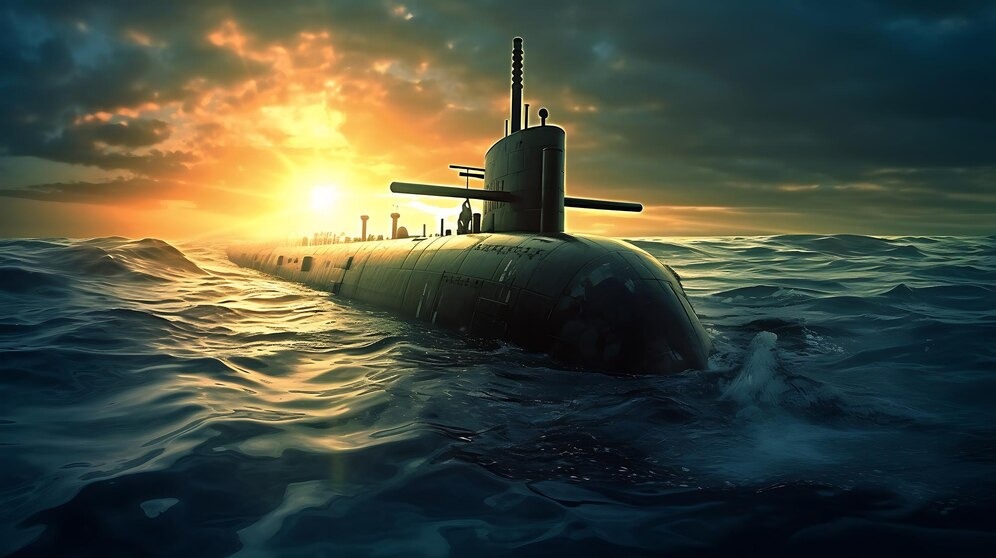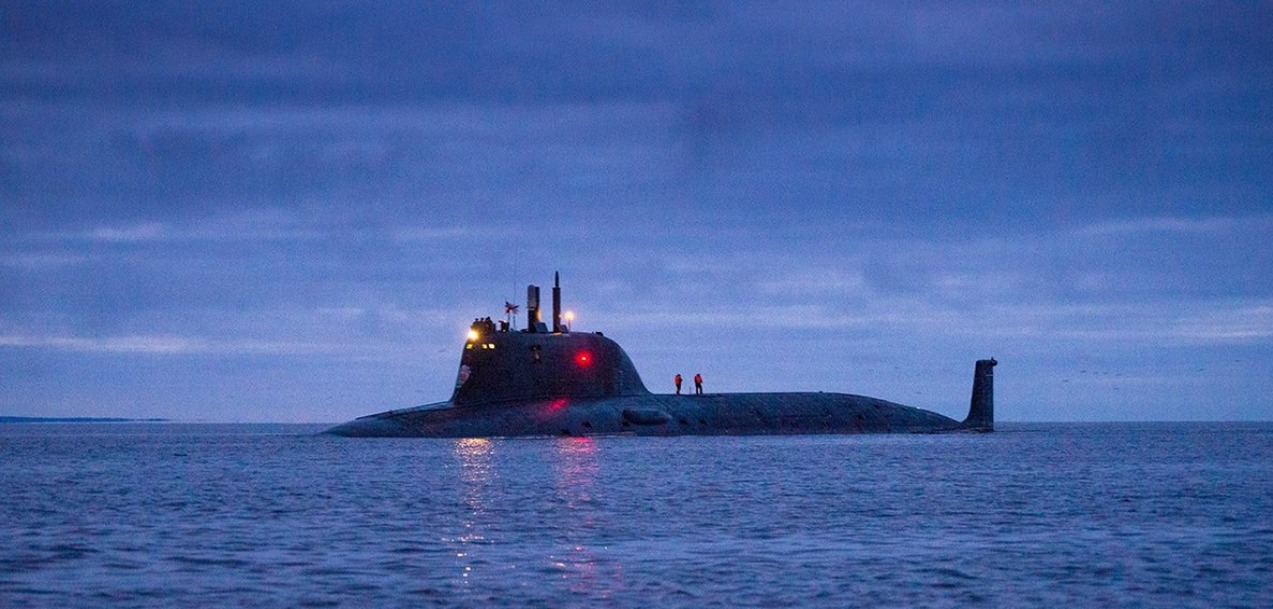Tech
Type 096 Submarine: U.S. Accuses Russia Of “Gifting” Cutting-Edge Tech To China For Help On Ukraine War

The United States has accused China of providing Russia with extensive military support to fuel the war in Ukraine. In return, Moscow is reportedly handing over critical military technology on submarines and missiles.
This is the first time Washington has directly charged Beijing with aiding Russia’s military efforts in the ongoing conflict. Speaking to reporters in Brussels, US Deputy Secretary of State Kurt Campbell highlighted China’s direct involvement in bolstering Russia’s military capabilities.
Following a visit to NATO headquarters, Campbell outlined how China was supplying Moscow with items that are playing a crucial role in Russia’s continued aggression against Ukraine.
“This is no longer about dual-use technologies,” Campbell said, referring to items that can be used for both civilian and military purposes. “These are component pieces of a very substantial effort by China to help sustain and diversify various elements of the Russian war machine.”
This revelation marks a new assessment by US officials regarding China’s role in Russia’s war of aggression against Ukraine. With Moscow under heavy international sanctions, its ability to maintain and produce military hardware has been significantly strained, making Chinese support even more critical.
Campbell added that both governments are taking measures to conceal the nature and extent of their cooperation, with many activities driven “underground.” Campbell noted that the US now views this collaboration as a direct and deliberate attempt to circumvent international sanctions and aid Russia’s war efforts.
For months, US officials have expressed concern about China’s potential support for Russia. National Security Adviser Jake Sullivan has raised the issue in multiple backchannel meetings with China’s Foreign Minister Wang Yi.
Despite these discussions, Washington claims Beijing has not dialed back its aid.
In response, China has consistently denied these allegations, maintaining that it remains neutral in the Ukraine war and does not supply either side with weapons. Nonetheless, the US is pushing its European allies to impose more stringent sanctions on China to pressure Beijing into reducing its support for Russia.
Russia Shares Submarine Tech With China?
Campbell highlighted that China’s support for Russia in its war against Ukraine is being reciprocated by Moscow. It is assisting Beijing in the development of advanced submarine, aeronautic, and missile technologies.
China’s “F-22 Challenger” Appears Ready! PLAAF May Have Overcome Engine Hurdles With J-20 Fighters
This collaboration is a significant shift, as Russia has historically been cautious about China reverse engineering its cutting-edge military technology. Moscow has long been protective of its intellectual property, wary that aiding China could create a large, capable military force in a neighboring country.
Over the past decade, Russia’s concerns were highlighted by several prominent instances in which Russian scientists involved in weapons development were imprisoned for allegedly passing state secrets to China. These incidents highlighted the delicate balance Moscow maintained in its military cooperation with Beijing.
However, the current arrangement—where Russia provides military expertise in exchange for Chinese supplies of critical components, such as parts used to manufacture Russian weapons—appears to be part of a strategic partnership “orchestrated at the highest levels” in Moscow and Beijing.

For example, Russia had previously been hesitant to share its advanced submarine technology with China, offering only limited assistance. However, with recent developments, China’s upcoming Type 096 SSBN submarine could become a key area where the two countries may increase their cooperation.
According to the Financial Times, China’s latest Type 096 nuclear ballistic missile submarine was developed with Russian assistance, particularly in making its propulsion system quieter.
The Type 096 SSBN is China’s next-generation nuclear-powered ballistic missile submarine, designed to enhance its underwater nuclear deterrence capabilities. It is still under development.
US naval researchers previously reported that the submarine shares similarities with Russian designs in terms of stealth capabilities, sensing equipment, and weapons systems. This includes a specialized “raft” design, which utilizes a rubber support system to reduce engine noise, improving the submarine’s stealth performance.
China’s interest in Russian submarine technology is not new. In 2020, reports surfaced that the two nations were collaborating on a new non-nuclear submarine design. In 2021, Russia’s Rubin Central Design Bureau, a key player in submarine research, was hit by a cyber-attack attributed to Chinese cyber actors.
Rubin has been instrumental in Russia’s development of advanced underwater systems, such as the Poseidon torpedo and the Harpsichord unmanned underwater vehicle (UUV), both of which are of significant interest to China.
Despite Russia’s limitations in defense acquisition and modernization due to budget constraints, it retains significant expertise in submarine technology, largely thanks to Rubin and the Malakhit Design Bureau.
The growing military collaboration between Russia and China, especially in the areas of stealth and surveillance, poses a “negative and concerning impact” on the security of the US and its allies.
China’s Type 096 Nuclear Submarine
The Type 096 SSBN signifies China’s upcoming next-generation nuclear deterrent, representing a notable improvement compared to the existing Type 094 SSBN.
The China Maritime Studies Institute estimates that the Type 096 SSBN will be approximately 150 meters long and capable of reaching speeds of around 29 knots, or 33 miles per hour.
The institute noted that the Type 096 features “significant improvements over its predecessors,” which could enable it to “compare favorably” with some of the Russian Navy’s advanced designs, such as the Borei-class SSBNs and Improved Akula-class SSNs.
The Pentagon has indicated that the Type 096 will be equipped with new, longer-range submarine-launched ballistic missiles (SLBMs) and is expected to enter service in the late 2020s or early 2030s.
This timeline could potentially see the Type 096 operational before the US Navy’s Columbia-class SSBN, which is projected to start its service in 2031.
China’s plan involves operating both the Type 094 and Type 096 SSBN fleets simultaneously throughout the 2030s, in line with President Xi Jinping’s 2018 directive for the SSBN force to achieve “stronger growth.”

The Type 096 SSBN is anticipated to offer significant upgrades in stealth, sensors, and weaponry compared to its predecessors, potentially altering the balance of power in the Indo-Pacific region.
Emma Salisbury, an associate fellow at the UK’s Council on Geostrategy, highlighted in an October 2023 Newsweek article that the Type 096 is expected to be more stealthier and have an extended operational range, which could prompt a reassessment of US naval strategies and capabilities.
“With much quieter SSBNs, Beijing’s navy may even risk venturing outside of “what they consider to be their ‘bastion’ waters in the South China Sea,” Salisbury said, “although this may be tempered by the long range of the JL-3 and the instinct to keep these submarines safely within the Chinese littoral.”
The Type 096’s enhanced stealth and extended range will likely make it more challenging for the US and its allies to monitor these submarines effectively.
On March 11, 2021, a writer known as Dr. Hou claimed on the Chinese Q&A platform Zhihu that the Type 096 SSBN, when equipped with the JL-3 — the third-generation intercontinental submarine-launched ballistic missile — would become China’s most advanced and formidable underwater weapon, capable of competing directly with US nuclear submarines.
He noted that the JL-3 if launched from submarines in the Western Pacific, could target all cities on the US West Coast. Hou further indicated that the Chinese government is progressing in addressing deficiencies within its strategic triad, claiming that the nation will ultimately reach important advancements in its military capabilities.











